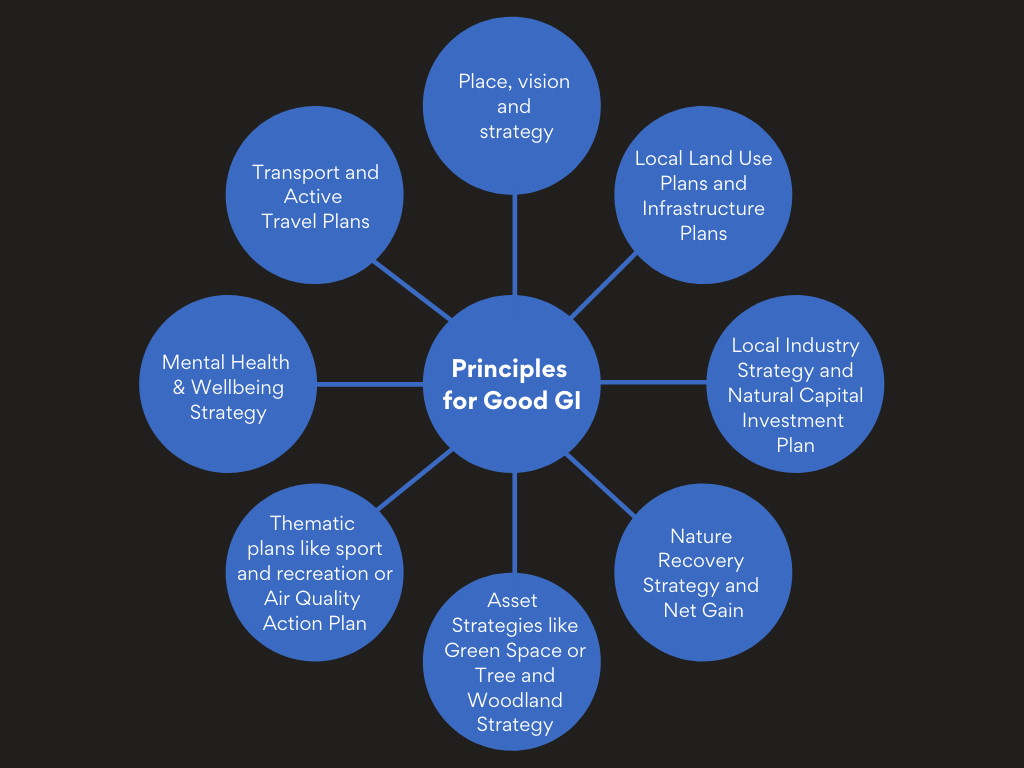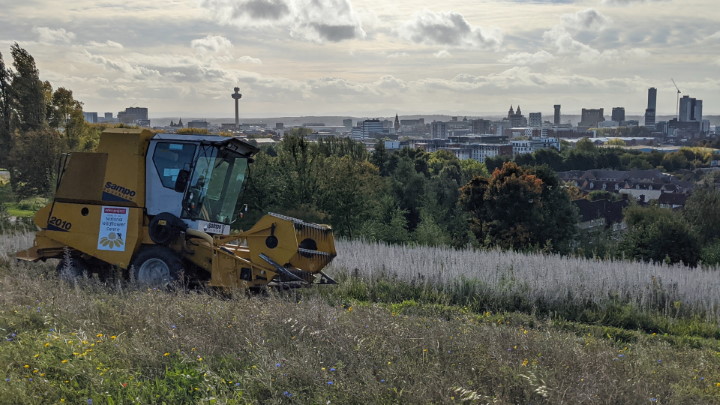
The extent to which GI needs to be integrated with other strategies will depend on local needs and opportunities. The key document is likely to be the statutory Development Plan for the area GI should also be considered in other plans and strategies such as:
- Local Nature Recovery Strategies (LNRS), these aim to restore and enhance biodiverse and well-functioning ecological networks designed to deliver multiple benefits based on identified need. These strategies are intended to assist planners and developers in achieving biodiversity net gain (BNG) and wider nature recovery. BNG can finance investment in both on and offsite green infrastructure and the enhancement of parks and greenspace.
- Climate change adaptation and mitigation strategies especially those which are aimed at addressing flood risk/water management and higher temperatures.
- Health policies designed to address local inequalities in health outcomes.
- Economic regeneration policy especially where poor quality environments are restricting investment.
- Infrastructure plans and strategies
Producing a separate GI strategy to inform or supplement other policies and plans can help to deliver better GI in both urban and rural areas They can set out further detail on local needs, gaps in provision and opportunities for enhancement.
